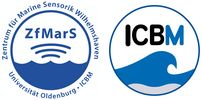Period | March 2019 - February 2022 |
| Contact Person | |
| MSYS Team | |
| Funding Agency | German Research Foundation - DFG |

Exploring remote sensing of plastics in marine litter
Marine litter especially microplastics in the ocean are challenging to assess with appropriate spatial, temporal, spectral, and signal-to-noise ratio observations. The classic approach of counting plastics gathered from net trawls falls short of providing comprehensive information of regional or global concentrations. Knowledge gaps in the counted plastics are being estimated by coupling and assimilating net trawl data into plastic distribution models. This proposal will explore the potential application of remote sensing tools for understanding the dynamics of plastics in marine litter following the recent work on marine-harvested plastics (Garaba and Dierssen, 2018). It will incorporate washed ashore plastics because it can originate from land or sea, meaning it makes a fraction of the plastics in marine litter. However, remote sensing approaches for the detection of plastics in the marine environment are still in the early stages, this proposal’s objectives are therefore aimed at advancing knowledge from evidence-based scientific research on the possible applications of remote sensing tools to systematically detect, track and quantify marine plastics. Furthermore, the findings will be fundamental to the development of algorithms and sensor technology specific to plastics in the natural environment. The pioneering work (Garaba and Dierssen, 2018) provides proof-of-concept that we can detect dry plastics and there is potential for the detection of wet plastics. This project will assess current and emerging remote sensing missions or technologies relevant to plastics in the aquatic environment. Datasets of opportunity from drones, airborne and satellites are already available and will be analysed to explore potential application of remote sensing to monitor ocean plastics. Synoptic remote sensing of marine litter, in particular detection capabilities, will have long-term applications in determining source regions of litter, locations and improve management efforts. Examples of cases where remote sensing has provided key benchmark geospatial information include observations after extreme weather events, oil spills or cargo ship or aircraft accidents



